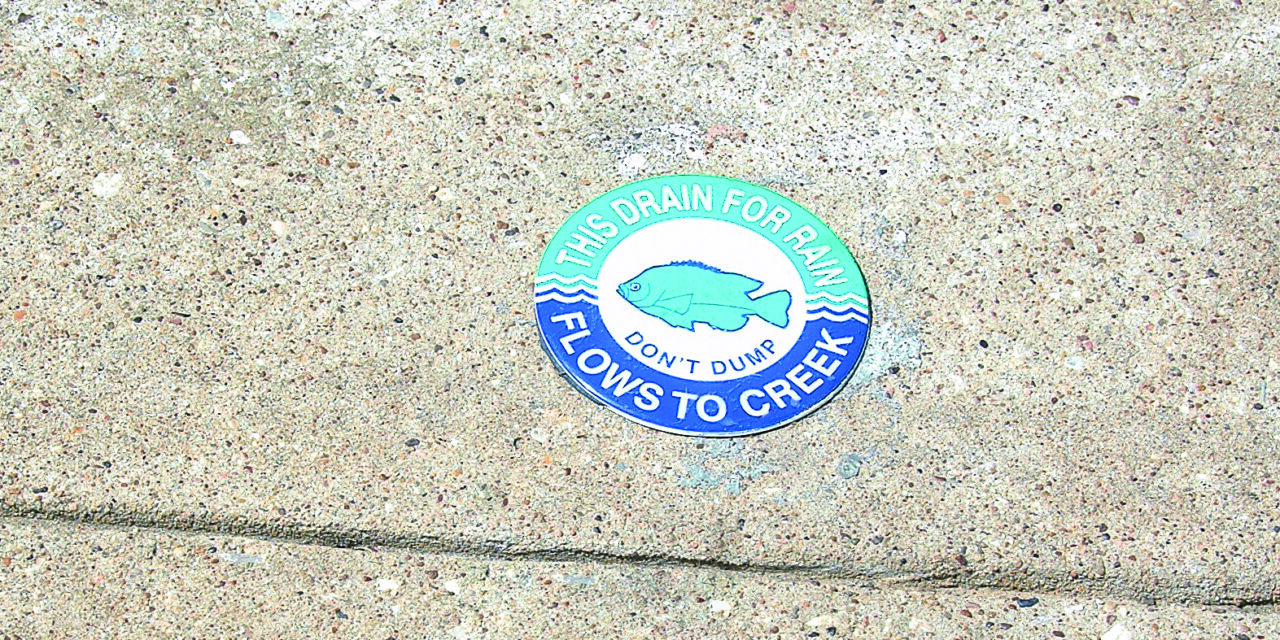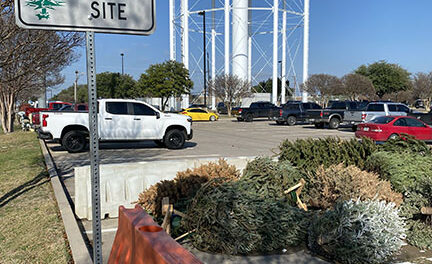When spring rains come, Richardson’s 400-mile storm water drainage system will be working hard to help divert rainwater away from homes and businesses and keep streets from flooding and overflowing—but do you know where that rainwater ends up? If you answered, “into the sewage system and on to a water treatment plant to be cleaned and purified,” you’d be wrong. Most municipal storm drain systems flow through a labyrinth of pipes into nearby waterways, which in Richardson means Cottonwood, Huffhines, Spring, Prairie and eight other creeks and their branches and forks. The water eventually flows to nearby lakes such as White Rock Lake and Lake Ray Hubbard. So, whatever goes into Richardson’s 10,000+ storm drains flows into those bodies of water and affects the fish, turtles and other North Texas aquatic life that call them home—which is why it’s important to keep contaminants from getting into storm drains.
To educate the community about storm drains, Richardson has listed “12 Steps to Avoid Stormwater Pollution” on the City website. Some of these steps include:
- Bag your pet’s waste.
- Don’t apply pesticides, fertilizers and herbicides before rain is expected.
- Dispose of oil properly after performing oil changes; check your car, boat or motorcycle for leaks.
- Don’t blow or sweep grass clippings or leaves into the storm drains.
- Dispose of paint and other household hazardous waste properly.
- Drain your pool into the sanitary sewer system.
The City has a web page devoted to properly draining swimming pools (did you know it’s illegal to drain a swimming pool into the alley or street?) Pool disinfectants and stabilizers can be very harmful to aquatic life and even untreated, stagnant pool water can negatively impact the sensitive balance of an already-stressed aquatic ecosystem if it’s allowed to flow down a storm drain.
Brochures and guides about the stormwater drainage system are available on the City’s website and also in print, and City staff are available to speak to community and school groups about water pollution prevention. Call 972-744-4080 to schedule.
A great way for the public to help get the word out about proper storm drain use is the City’s Storm Drain Marking for Volunteers initiative, a program that’s been in place for at least a decade, in which groups of volunteers place round plastic storm drain markers directly on top of storm drains. The markers are green and blue and emblazoned with the words, “THIS DRAIN FOR RAIN/FLOWS TO CREEK” and “DON’T DUMP” along with an image of a fish. Contact the Health Department at AskRichardsonHealth@cor.gov for more information.





